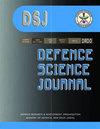Construction and Analysis of Petri Net Model for Distributed Cyber Physical Systems
IF 0.8
4区 工程技术
Q3 MULTIDISCIPLINARY SCIENCES
引用次数: 0
Abstract
A Distributed Cyber-Physical System (DCPS) composition poses challenges in determining its emergent behaviour. These challenges occur due to (1) the appearance of causal loops of information and energy flow through cyber and physical channels and (2) inherent non-determinism in the temporally ordered flow of events within independently evolving interacting processes of Constituent Systems (CSs). Hence, there is a need to construct a model of the envisaged schematic of DCPS composition for analysis and verification of its significant properties in the conceptual design stage of the system development life cycle. This paper presents a procedure to construct DCPS composition models in Petri net formalism using distributed abstractions. The model for each CS is obtained from elementary constructs using compositional operators. The interaction among CSs occurs through channels obtained by connecting send and receive constructs of two CSs participating in an interaction. The internal processing within a CS characterizing its primary function is abstracted in a generic passthrough construct. Representing these constructs with compositional operators results in the complete DCPS model in Petri net formalism. A toolchain with Reference net workshop (Renew) as an integrated Petri net editing and analysis platform is configured to support DCPS modelling, simulation and analysis. The Renew tool functionality has been enhanced with a plugin designed and developed by authors to facilitate the drawing of the distributed composition model. A low-level Petri net analysis (Lola) v2.0 plugin is employed to verify the Petri net and temporal properties of the modelled DCPS scenarios. The properties of the resultant model are verified using well-established algorithms to analyze Petri nets. Further, system properties specified using temporal logic can be verified using model-checking algorithms for Petri nets. A moderately complex scenario involving interactions among six CSs illustrates the presented approach.分布式网络物理系统Petri网模型的构建与分析
分布式信息物理系统(DCPS)构成在确定其紧急行为方面提出了挑战。这些挑战的发生是由于(1)信息和能量通过网络和物理渠道流动的因果循环的出现,以及(2)在组成系统(CSs)独立发展的相互作用过程中,时间有序的事件流中固有的非确定性。因此,在系统开发生命周期的概念设计阶段,有必要构建设想的DCPS组成原理图的模型,以分析和验证其重要特性。提出了一种利用分布式抽象在Petri网形式化中构造DCPS组合模型的方法。每个CS的模型是使用组合算子从基本构造中得到的。CSs之间的交互是通过连接参与交互的两个CSs的发送和接收构造而获得的通道进行的。CS内表征其主要功能的内部处理被抽象为通用直通构造。用组合运算符表示这些结构可以得到完整的Petri网形式的DCPS模型。一个工具链与参考网络研讨会(更新)作为一个集成的Petri网编辑和分析平台配置支持DCPS建模,仿真和分析。Renew工具功能通过作者设计和开发的插件得到了增强,以方便绘制分布式组合模型。使用低级Petri网分析(Lola) v2.0插件来验证建模的DCPS场景的Petri网和时间属性。利用已建立的Petri网分析算法验证了所得模型的性质。此外,使用时间逻辑指定的系统属性可以使用Petri网的模型检查算法进行验证。一个涉及六个CSs之间交互的中等复杂场景说明了所提出的方法。
本文章由计算机程序翻译,如有差异,请以英文原文为准。
求助全文
约1分钟内获得全文
求助全文
来源期刊

Defence Science Journal
综合性期刊-综合性期刊
CiteScore
1.80
自引率
11.10%
发文量
69
审稿时长
7.5 months
期刊介绍:
Defence Science Journal is a peer-reviewed, multidisciplinary research journal in the area of defence science and technology. Journal feature recent progresses made in the field of defence/military support system and new findings/breakthroughs, etc. Major subject fields covered include: aeronautics, armaments, combat vehicles and engineering, biomedical sciences, computer sciences, electronics, material sciences, missiles, naval systems, etc.
 求助内容:
求助内容: 应助结果提醒方式:
应助结果提醒方式:


